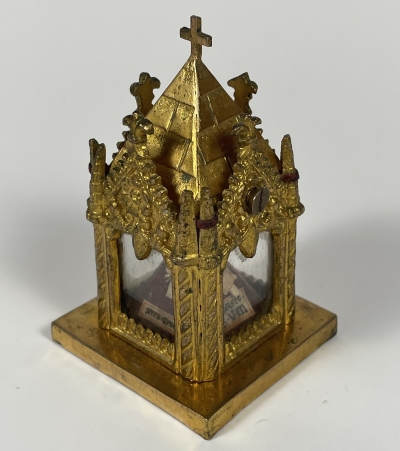The True Cross is the name for physical remnants which, by the Church tradition, are believed to be from the cross upon which Jesus was crucified. Empress Helena, the mother of Constantine, the first Christian Emperor of Rome, traveled to the Holy Land in 326–28, where she discovered the hiding place of three crosses that were believed to be used at the crucifixion of Jesus and of two thieves, St. Dismas and Gestas, executed with him, and a miracle revealed which of the three was the True Cross. Fragments of the Cross were broken up, and the pieces were widely distributed; in 348, in one of his Catecheses, Cyril of Jerusalem remarked that the "whole earth is full of the relics of the Cross of Christ." Most of the very small relics of the True Cross in Europe came from Constantinople after the city was captured and sacked in 1204 during the Fourth Crusade. They were carved up by the present bishops and divided with other very precious relics among the knights; who, after their return to the homeland, donated them to churches and monasteries.
The Holy Shroud is considered one of the most important relics of Christianity. Its existence has been documented since the 6th century, when it was venerated in Edessa, Syria. In 944, it was brought to Constantinople, where it was depicted in the “Codex Pray” and described in the homilies of the Patriarchs and the reports of visitors. In 1204, during the 4th Crusade, it was stolen from its reliquary in the Imperial Palace Chapel by the French knight Othon de la Roche and brought to France via Athens. He sent it to his castle near Besancon, where it was shown in the local Cathedral on Good Friday. Since 1357, it was first venerated in Lirey, Champagne, then in Chambery, and finally brought to Turin, Italy by the Savoy Dynasty in 1598.
The Virgin Mary’s Garment or Vestment is considered among the most significant Marian relics. The feast of the deposition of Mary’s vestment/garment is celebrated on July 2.







 Change language to English
Change language to English